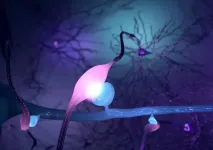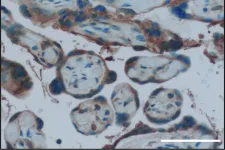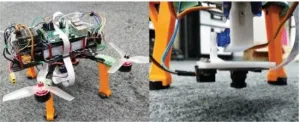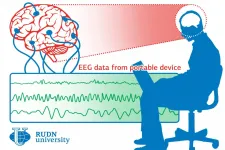(Press-News.org) An adverse upbringing often impairs people's circumstances and health in their adult years, especially for couples who have both had similar experiences. This is shown by a new study, carried out by Uppsala University researchers, in which 818 mothers and their partners filled in a questionnaire one year after having a child together. The study is now published in the scientific journal PLOS ONE.
"When we studied couples where both partners stated they'd had a hard time as children, the connection between negative childhood experience and a relatively unfavourable living situation in adulthood became especially clear," says Per Kristiansson, a specialist doctor in general medicine, senior lecturer at Uppsala University's Department of Public Health and Caring Sciences and the study's principal author.
Adverse childhood experiences (ACEs) have serious lifelong repercussions. Previous international studies (eg Felitti et al 1998, Hughes et al 2017, Merrick et al 2018) have shown that they entail a greater risk of falling ill, and of dying prematurely, from a range of common diseases and conditions. These include severe mental ill-health, cancer, cardiovascular disease and diabetes. The more numerous the ACEs, the higher the risk of negative consequences.
The present study is distinguished by the unusually large number of respondent couples. A total of 818 (1636 individuals, comprising 818 mothers and their 818 partners, 3 of whom were women) took part, submitting answers to the questionnaire, one year after having a child together.
The ACEs the researchers focused on were both mental and physical abuse and neglect; sexual assault; and problematic situations in the family like criminal behaviour, substance abuse, violence, mental disorders and separations.
Individual ACEs were common among all respondents, and 11 per cent of the women and 9 per cent of their partners reported having four or more such experiences. In 2 per cent of the couples, both individuals recounted at least four ACEs. If one person in a couple had undergone them, the other was more likely to have done so as well.
The greater the number of ACEs for the woman, the partner and the couple together, the worse their adult prospects turned out to be. Several couples who had experienced many problems in childhood had strikingly more problems in adulthood than the others. This group of respondents, compared with the couples who described their childhood as problem-free, were characterised by the following to a larger extent:
low educational attainment
low income
poor couple relationships
overweight
smoking habits to a larger extent
low sense of coherence (SOC)
poor self-assessed health
high stress level
very high frequency of anxiety and depression.
Kristiansson explains: "The fact that ACEs in early life can have such grave consequences is connected with the severe, toxic stress that affects children's central nervous system and other organs while they are growing up. 'Toxic stress' means strong, frequent and lasting activation of the body's stress-response system (Shonkoff et al 2009). This indicates that ACEs have a far-reaching negative impact on people's lives and health up to an advanced age, and may also affect the next generation."
Previous studies (Shonkoff et al 2009, Heckman 2006) show, he points out, that combating toxic stress in the early years brings gains for society: it improves student performance, boosts economic productivity and enhances citizens' sense of responsibility.
"That's why we hope our results will prompt public agencies - especially healthcare and social services, but also civil society - to take the initiative in detecting, supporting and providing treatment for families and individuals affected by adverse childhood experiences."
INFORMATION:
Sven-Olof Andersson et al., Adverse Childhood Experiences are associated with choice of partner, both partners' relationship and psychosocial health as reported one year after birth of a common child. A cross-sectional study, PLOS ONE.
Literature referred to in the press release.
1. Felitti VJ, Anda RF, Nordenberg D, Williamson DF, Spitz AM, Edwards V, et al. Relationship of childhood abuse and household dysfunction to many of the leading causes of death in adults. The Adverse Childhood Experiences (ACE) Study. Am J Prev Med. 1998;14(4):245-58.
2. Hughes K, Bellis MA, Hardcastle KA, Sethi D, Butchart A, Mikton C, et al. The effect of multiple adverse childhood experiences on health: a systematic review and meta-analysis. Lancet Public Health. 2017;2(8):e356-e66. Epub 2017/12/19. doi: 10.1016/S2468-2667(17)30118-4
3. Merrick MT, Ford DC, Ports KA, Guinn AS. Prevalence of Adverse Childhood Experiences From the 2011-2014 Behavioral Risk Factor Surveillance System in 23 States. JAMA Pediatr. 2018;172(11):1038-44.
4. Shonkoff JP, Boyce WT, McEwen BS. Neuroscience, molecular biology, and the childhood roots of health disparities: building a new framework for health promotion and disease prevention. Jama. 2009;301(21):2252-9. Epub 2009/06/06.
5. Heckman J. Skill Formation and the Economics of Investing in Disadvantaged Children. Science, 2006, vol 312 pp 1900-02.
Early Medieval Europe is frequently viewed as a time of cultural stagnation, often given the misnomer of the 'Dark Ages'. However, analysis has revealed new ideas could spread rapidly as communities were interconnected, creating a surprisingly unified culture in Europe.
Dr Emma Brownlee, Department of Archaeology, University of Cambridge, examined how a key change in Western European burial practices spread across the continent faster than previously believed - between the 6th - 8th centuries AD, burying people with regionally specific grave goods was largely abandoned in favour of a more standardised, unfurnished burial.
"Almost everyone from the eighth century onwards ...
As scientists increasingly rely on eyewitness accounts of earthquake shaking reported through online systems, they should consider whether those accounts are societally and spatially representative for an event, according to a new paper published in Seismological Research Letters.
Socioeconomic factors can play a significant if complex role in limiting who uses systems such as the U.S. Geological Survey's "Did You Feel It?" (DYFI) to report earthquake shaking. In California, for instance, researchers concluded that DYFI appears to gather data across a wide socioeconomic range, albeit with some intriguing differences related to neighborhood income levels during earthquakes such as the ...
The neocortex is the part of the brain that humans use to process sensory impressions, store memories, give instructions to the muscles, and plan for the future. These computational processes are possible because each nerve cell is a highly complex miniature computer that communicates with around 10,000 other neurons. This communication happens via special connections called synapses.
The bigger the synapse, the stronger its signal
Researchers in Kevan Martin's laboratory at the Institute of Neuroinformatics at the University of Zurich (UZH) and ETH Zurich have now shown for the first time that the size of synapses determines the strength of their ...
TAMPA, Fla. -- Myelodysplastic Syndromes (MDS) and acute myeloid leukemia (AML) are rare hematologic malignancies of the bone marrow. They can occur spontaneously or secondary to treatment for other cancers, so called therapy related disease, which is frequently associated with a mutation of the tumor suppressor gene TP53. Standard treatment for these patients includes hypomethylating agents such as azacitidine or decitabine but unfortunately outcomes are very poor.
"Patients with TP53-mutant disease, which is roughly 10% to 20% of AML and de novo MDS cases, don't have many options ...
Growing perennial grasses on abandoned cropland has the potential to counteract some of the negative impacts of climate change by switching to more biofuels, according to a research group from the Norwegian University of Science and Technology (NTNU).
Researchers consider increased use of biofuels to be an important part of the solution to reduce CO2 emissions. But the production of plants for biofuels can have some unfortunate trade-offs.
Now, the NTNU researchers have come up with a scenario that would put less pressure on food production and plant and animal life.
"We can grow perennial grasses in areas that until recently were used for growing food but that are no longer used for that purpose," explains Jan Sandstad ...
DURHAM, N.C. - Researchers at Duke and Mt. Sinai have identified a molecular mechanism that prevents a viral infection during a mother's pregnancy from harming her unborn baby.
When a person becomes infected by a virus, their immune system sends out a chemical signal called type I interferon, which tells surrounding cells to increase their anti-viral defenses, including making more inflammation.
This response helps to prevent the virus from copying itself and gives the adaptive immune system more time to learn about the new invader and begin to hunt it down.
A pregnant woman ...
Initially earmarked for covert military operations, unmanned aerial vehicles (UAVs) or drones have since gained tremendous popularity, which has broadened the scope of their use. In fact, "remote pilot" drones have been largely replaced by "autonomous" drones for applications in various fields. One such application is their usage in rescue missions following a natural or man-made disaster. However, this often requires the drones to be able to land safely on uneven terrain--which can be very difficult to execute.
"While it is desirable to automate the landing using a depth camera that can gauge terrain unevenness and find suitable landing spots, a framework serving as a useful base needs to be developed first," ...
A neurosurgeon from RUDN University studied the mental activity of developers at work. In his novel method, he combined mobile EEG devices and software that analyzes neurophysiological data. The results of the study were published in the materials of the 23rd Euromicro Conference on Digital System Design (DSD).
To collect data about the activity of specific areas of the brain, one can use functional magnetic resonance imaging (fMRI). However, this method involves massive equipment and is only available at clinics or laboratories. Therefore, it is quite difficult to register human mental activity in a natural environment. Even if usual conditions are reproduced in a lab, the very fact that it is an experiment would still affect the behavior of the participants. ...
Peer-reviewed / Modelling / People
UK modelling study estimates 59% of SARS-CoV-2 transmission may be prevented by completing the WHO recommended 14-day quarantine period after exposure to a confirmed COVID-19 case
Model assumes that quarantine adherence levels are moderate, with 67% of people completing the recommended 14-day isolation period after testing positive for COVID-19 and 50% of contacts of confirmed cases completing 14 days of quarantine.
A similar proportion of transmission could be prevented with only 7 days of quarantine (assuming the same level of adherence) if a COVID-19 ...
In normal times, end-of-life care discussions are most commonly led by senior doctors. However, new research from a busy London hospital shows that the high numbers of deaths taking place in hospitals during the COVID-19 pandemic, frequently out-of-hours, is leading to junior (foundation level) doctors having to lead on these difficult discussions with families, often with no formal experience or training.
The study is by Dr Edmund Lodwick, King's College Hospital NHS Trust, London, UK, and presented at this month's Winter Scientific Meeting of the Association of Anaesthetists, held online. He analysed the situation at Croydon University Hospital, London, where he spent his own foundation level training. This is a typically busy London hospital ...




